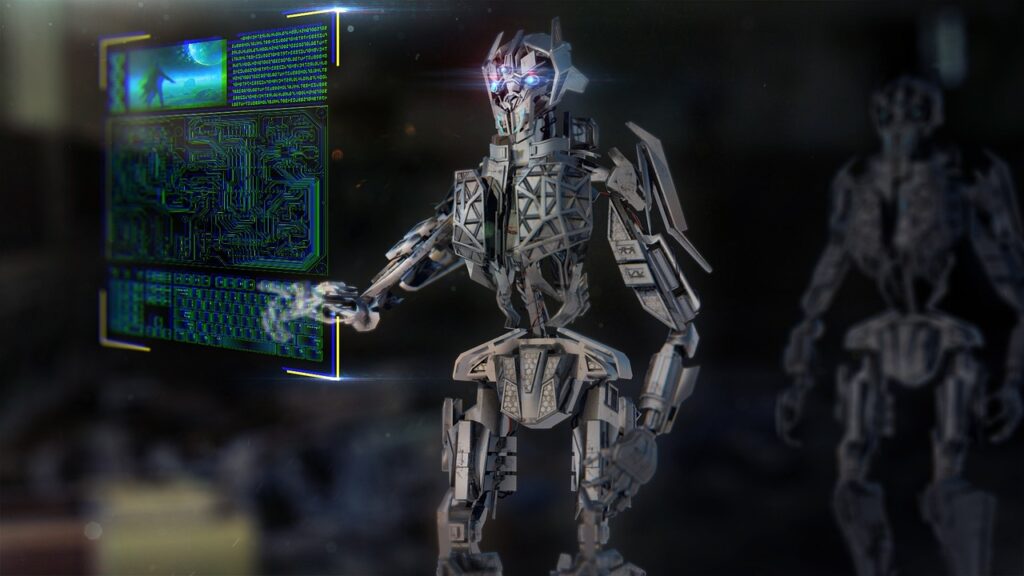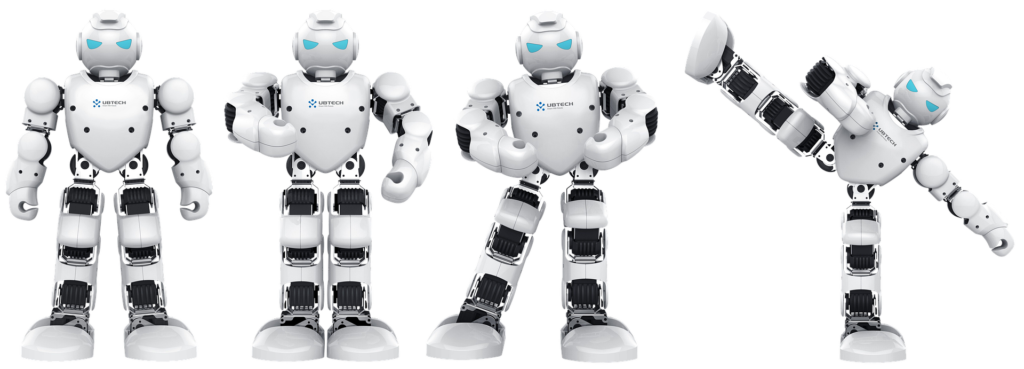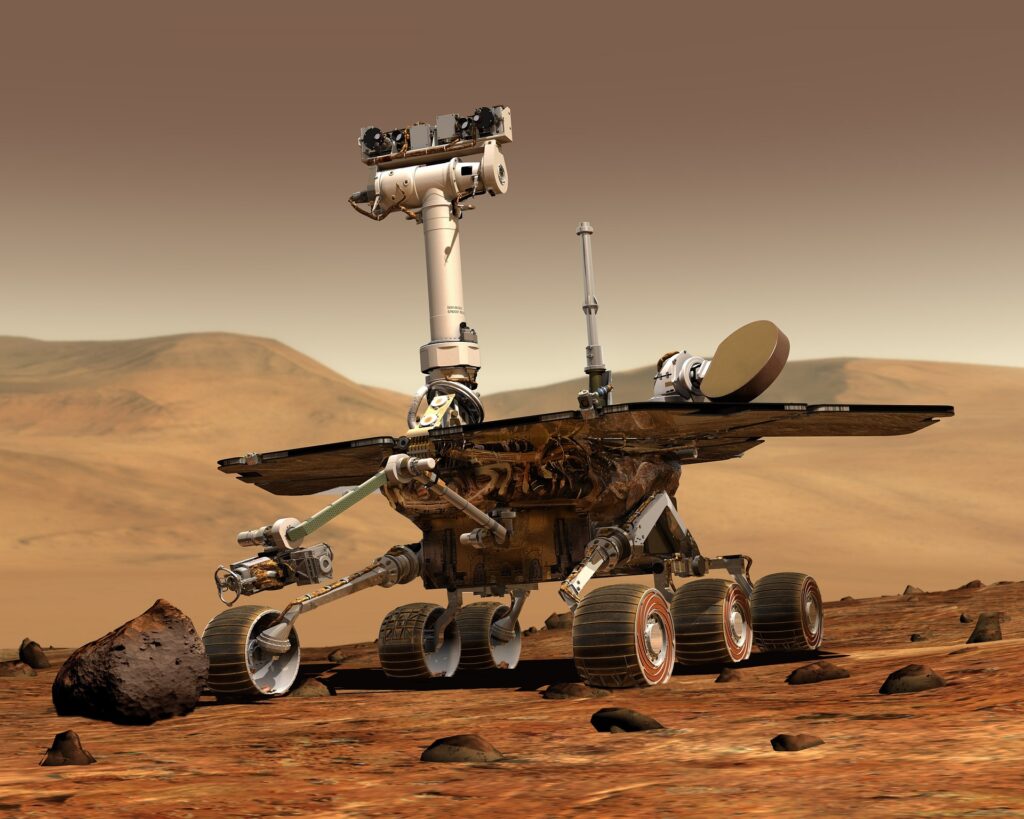Posted: February 17th, 2023
Artificial Intelligence Essay

Introduction
Artificial intelligence (AI) has been a buzzword for quite some time, and for a good reason. AI has the potential to revolutionize industries, transform our daily lives, and solve some of the world’s most complex problems. But what is AI, exactly, and how does it work? In this article, we’ll explore the history of AI, the different types of AI, and some examples of AI in action.
The History of Artificial Intelligence
The roots of artificial intelligence can be traced back to the early 20th century when mathematicians and philosophers began to explore the concept of a machine that could perform tasks that would normally require human intelligence. However, it was not until the 1950s that the term “artificial intelligence” was first coined by computer scientist John McCarthy.
In the following years, researchers developed algorithms and programs that could simulate basic human abilities, such as logic, language, and perception. One of the earliest and most famous AI programs was ELIZA, a natural language processing program developed by Joseph Weizenbaum in the 1960s. ELIZA was designed to simulate a conversation between a human therapist and patient and was able to generate convincing responses by analyzing the language of the user’s input.
Despite these early successes, the development of AI faced significant challenges in the following decades. The limitations of available computer hardware and the lack of adequate data and programming knowledge meant that AI research progressed slowly throughout the 1970s and 80s.
However, the advent of the internet and the rapid expansion of digital technology in the 1990s and 2000s led to a new wave of AI development. Advances in machine learning, data analysis, and natural language processing allowed for the creation of increasingly sophisticated and powerful AI algorithms.

Current State of Artificial Intelligence
Today, AI is becoming increasingly prevalent in our daily lives. From intelligent personal assistants like Apple’s Siri and Amazon’s Alexa to self-driving cars and virtual assistants, AI is changing how we interact with technology and each other.
One of the key drivers of this progress has been the development of deep learning algorithms, which can process large amounts of data and learn from their own mistakes to improve performance over time. These algorithms are used in various applications, from speech recognition and natural language processing to image and facial recognition.
Another important area of AI research is robotics. Advances in robotics technology enable the development of autonomous robots that can perform a wide range of tasks, from manufacturing and logistics to healthcare and household chores.
The potential benefits of AI are enormous. It has the ability to improve our health and safety, create new industries and jobs, and increase the efficiency and productivity of many sectors of the economy. However, as with any new technology, there are also potential risks and downsides to consider.
The Ethical and Social Implications of Artificial Intelligence
One of the key concerns with AI is the impact it could have on jobs and the economy. As AI becomes more capable, it can potentially replace human workers in various industries, from manufacturing and logistics to healthcare and education. While this could lead to increased efficiency and productivity, it could also result in significant job losses and social disruption.
Another concern is the potential for AI to be used for malicious purposes. For example, autonomous weapons could be used to carry out attacks without human oversight, while facial recognition technology could be used for surveillance and tracking without consent. There are also concerns about the accuracy and bias of AI algorithms, which could lead to discrimination and unfair treatment of certain groups.
Finally, there are ethical concerns around the development of superintelligent AI, which could potentially surpass human intelligence and become autonomous agents with their own goals and values. This could have profound implications for our society, raising questions about the control and ownership of AI and the nature of consciousness and free will.
Types of AI
There are several types of AI, each with its own strengths and limitations. The three main types of AI are:
- Narrow or Weak AI: This type of AI is designed to perform a specific task, such as image recognition, speech recognition, or language translation. Narrow AI is the most common type of AI in use today, and it’s what most people think of when they hear the term “artificial intelligence.”
- General or Strong AI: This type of AI is designed to perform any intellectual task that a human can do. General AI is still largely a theoretical concept, as no machine has yet been developed that can truly match the cognitive abilities of a human.
- Superintelligent AI: This type of AI is designed to surpass human intelligence in all areas. Superintelligent AI is the stuff of science fiction, but it’s a topic of growing concern among AI researchers, who worry about the potential dangers of creating machines that are more intelligent than we are.
Examples of AI in Action

Artificial Intelligence (AI) has been one of our most revolutionary technological advances. From virtual assistants like Siri to self-driving cars, AI has completely changed the way we live, work, and interact with each other.
AI is a powerful tool that enables machines to perform tasks that would usually require human intelligence. The use of AI in various fields has increased drastically over the past few years, and it has brought about many significant changes in the way things work.
This article will explore various examples of AI in action, how they work, and their impact on different industries.
Virtual Assistants
Virtual assistants such as Siri, Alexa, and Google Assistant are some of the most popular AI examples in action. These intelligent assistants use natural language processing (NLP) to understand human commands and provide appropriate responses.
Virtual assistants use AI algorithms to understand and learn from the user’s behavior, such as search history, location, and preferences. The more the user interacts with the virtual assistant, the more it learns about their habits, preferences, and daily routines.
These AI-powered assistants can help users by making calls, sending messages, setting reminders, making reservations, and even ordering food. Technology has completely revolutionized how we interact with our devices, making it easier to access information, products, and services.
Healthcare
The healthcare industry has significantly benefited from AI technology in recent years. AI in healthcare has helped doctors and medical professionals diagnose diseases, predict patient outcomes, and provide better treatment.
For instance, IBM’s Watson Health uses machine learning algorithms to analyze patient data, medical records, and research papers to provide doctors with insights and recommendations for treatment. Watson’s AI system is designed to identify the most effective treatment options for specific diseases based on patient data.
Additionally, AI has been used in radiology to analyze medical images, such as X-rays, CT scans, and MRIs. The technology has enabled doctors to diagnose and treat diseases more accurately and efficiently, resulting in better patient outcomes.
Banking and Finance
AI has also had a significant impact on the banking and finance industry. Banks and financial institutions have been using AI-powered tools to automate tasks, analyze financial data, and improve customer experience.
One of the most prominent examples of AI in banking is chatbots. Chatbots use NLP to understand customer queries and provide responses quickly and efficiently. Chatbots have been used by many banks to handle customer support and queries, reducing the need for human customer service agents.
AI is also used in fraud detection to identify and prevent fraudulent transactions. Machine learning algorithms are trained to detect unusual patterns and behaviors in financial transactions, which can indicate fraudulent activity.
Retail
Retail is another industry that has benefited significantly from AI technology. E-commerce giants like Amazon use AI algorithms to provide personalized recommendations to customers based on their purchase history, search history, and browsing behavior.
AI-powered chatbots are also used in the retail industry to provide customer support, handle orders, and assist customers in finding the right product.
AI has also been used in inventory management to analyze data on customer demand and optimize inventory levels. This helps retailers to reduce costs and improve customer satisfaction by ensuring that the right products are always in stock.
Manufacturing
The manufacturing industry uses AI technology to improve efficiency, reduce costs, and enhance quality control. AI-powered robots are used in manufacturing plants to perform repetitive and dangerous tasks, such as welding, assembly, and painting.
AI algorithms are also used in predictive maintenance to identify potential equipment failures before they occur. This helps manufacturers to avoid costly downtime and reduce the need for manual inspections.
AI is also used in supply chain management to optimize logistics and reduce costs. Machine learning algorithms analyze data on transportation, inventory, and demand.

An Artificial Intelligence Essay
Introduction
Artificial Intelligence (AI) is a rapidly growing field in the technological landscape, with its roots dating back to the 1950s. AI has seen numerous breakthroughs in recent years, including natural language processing, image recognition, and decision-making processes that mimic human cognition. This essay explores AI from a holistic standpoint and examines its potential impact on various aspects of society, including healthcare, transportation, education, and employment.
What is Artificial Intelligence?
Artificial intelligence (AI) technology allows machines to mimic human intelligence and decision-making processes. AI has seen a surge in popularity and applications in recent years thanks to advancements in computational power, data storage, and algorithmic techniques.
AI can be divided into two main categories: narrow or weak AI and general or strong AI. Narrow AI is designed to perform specific tasks, such as voice recognition or image analysis. General AI, on the other hand, has the ability to reason and learn like a human, making it capable of performing any intellectual task.
The history of AI can be traced back to the 1950s when computer scientist John McCarthy first coined the term “artificial intelligence.” Since then, researchers have been developing algorithms and programs that can simulate human abilities, such as language, perception, and logic. However, AI faced significant challenges in the following decades due to the limitations of computer hardware and the lack of adequate data and programming knowledge.
In recent years, AI has made significant progress due to the expansion of digital technology and the development of deep learning algorithms. This has enabled the creation of increasingly sophisticated AI algorithms that are able to process large amounts of data and learn from their own mistakes to improve performance over time.
How Does Artificial Intelligence Work?

AI systems rely on data inputs to make decisions or predictions. Data is fed into the AI system, which uses algorithms to analyze and process the data to make decisions. The process of training an AI system involves providing it with large amounts of data that are relevant to the intended task. This data teaches the AI system how to recognize patterns and make decisions based on the information.
One of the critical techniques used in AI is machine learning. Machine learning is a subset of AI that enables machines to learn from experience without being explicitly programmed. In machine learning, algorithms use statistical techniques to identify patterns and relationships in data. These algorithms can be supervised or unsupervised. Supervised learning involves providing labeled data to the algorithm, whereas unsupervised learning involves unlabelled data.
Deep learning is a subset of machine learning that uses neural networks to process and analyze data. Neural networks are designed to mimic the structure and function of the human brain. In deep learning, these networks are constructed of multiple layers, each layer processing and analyzing data to extract specific features. Deep learning is highly effective in image and speech recognition, natural language processing, and decision-making.
Applications of Artificial Intelligence
AI has a wide range of applications, with various industries benefiting from its capabilities. Some of the key industries that are using AI include healthcare, transportation, education, and employment.
Healthcare
The healthcare industry has been an early adopter of AI, using the technology to improve patient care, reduce costs, and enhance efficiency. AI is being used to analyze patient data to identify risk factors and predict potential health problems. This technology is also being used to develop personalized treatment plans for patients, which can be highly effective in managing chronic conditions. In addition, AI is being used to enhance medical imaging, allowing for more accurate and efficient diagnoses.
Transportation
The transportation industry is another sector that is benefiting from AI. AI is being used to develop autonomous vehicles, which have the potential to improve safety and reduce traffic congestion. Autonomous vehicles rely on sensors and cameras to detect their surroundings, allowing them to make decisions and navigate the road safely. In addition, AI is being used to optimize transportation routes and reduce fuel consumption.
Education
The education industry is another sector that is using AI to improve student learning outcomes. AI is being used to develop personalized learning plans for students, which can enhance their learning experience and improve their academic performance. This technology is also being used to develop intelligent tutoring systems to provide students with personalized feedback and support.

While the potential benefits of AI are enormous, there are also potential risks and downsides to consider. One concern is AI’s impact on jobs and the economy. As AI becomes more capable, it has the potential to replace human workers in a wide range of industries, which could result in significant job losses and social disruption.
Another concern is the potential for AI to be used for malicious purposes, such as carrying out attacks without human oversight or using facial recognition technology for surveillance and tracking without consent. There are also concerns about the accuracy and bias of AI algorithms, which could lead to discrimination and unfair treatment of certain groups.
Finally, there are ethical concerns around the development of superintelligent AI, which could potentially surpass human intelligence and become autonomous agents with their own goals and values. This could have profound implications for our society, raising questions about the control and ownership of AI and the nature of consciousness and free will.
In conclusion, AI’s development is changing our world, and its potential benefits are enormous. However, it is important to consider this technology’s potential risks and downsides and address these concerns through careful regulation and ethical guidelines. By doing so, we can ensure that AI continues to be a good force and helps us build a better world for all.

Frequently Asked Questions
What is artificial intelligence?
Artificial intelligence (AI) is a field of computer science that focuses on developing machines that can perform tasks that would normally require human intelligence, such as perception, reasoning, learning, and decision-making.
What are some examples of AI?
There are many examples of AI, including virtual assistants like Siri and Alexa, self-driving cars, facial recognition technology, and machine learning algorithms used in healthcare, finance, and other industries.
How is AI developed?
AI is developed through the use of algorithms and machine learning techniques that enable machines to learn and improve from experience. This requires large amounts of data and computing power.
What are the benefits of AI?
AI has the potential to revolutionize many industries, including healthcare, transportation, and finance, by improving efficiency, accuracy, and decision-making. It can also help improve our daily lives by providing personalized assistance and improving the quality of our services and products.
What are the risks of AI?
The risks of AI include the potential for job loss and economic disruption, the ethical concerns around the development of superintelligent AI, and the potential for bias and discrimination in AI algorithms.
How can AI be regulated and managed?
AI can be regulated and managed through the development of ethical guidelines and standards and government policies and regulations. It is important to ensure that AI is developed and used to benefit society as a whole and protect individuals’ rights and privacy.
What is the future of AI?
AI’s future will likely involve continued advances in technology and the development of new applications in healthcare, transportation, and other industries. However, it is also important to consider the potential risks and ethical concerns associated with AI development and address these issues through careful regulation and oversight.
Expert paper writers are just a few clicks away
Place an order in 3 easy steps. Takes less than 5 mins.